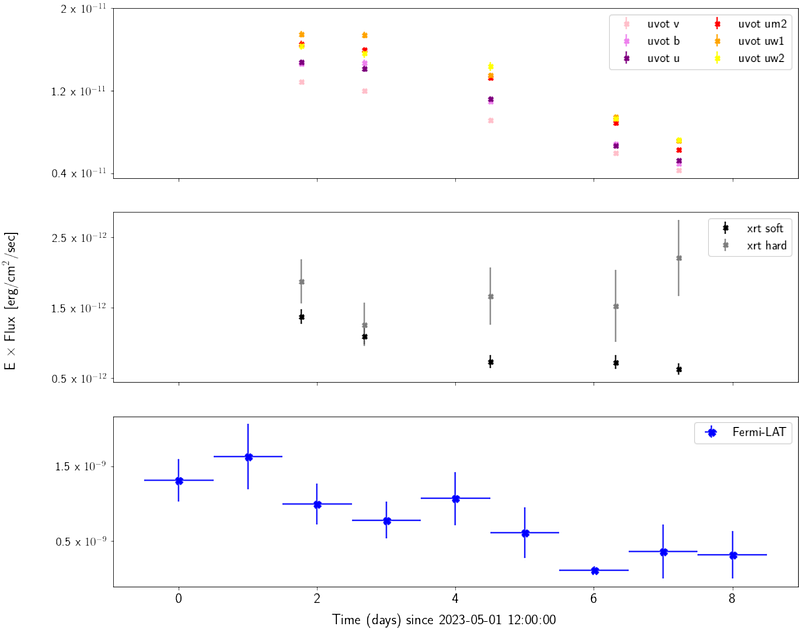Fermi-LAT Discovery of a Gamma-ray Outburst from the Peculiar Compact Steep Spectrum Radiogalaxy 3C 216

Fermi-LAT Discovery of a Gamma-ray Outburst from the Peculiar Compact Steep Spectrum Radiogalaxy 3C 216
Federica Giacchino, Giovanni La Mura, Stefano Ciprini, Dario Gasparrini, Marcello Giroletti, Marco Laurenti
Abstract3C 216 is an extra-galactic radio source classified as a compact steep spectrum (CSS) object, associated with the source 4FGL J0910.0+4257 detected by the Large Area Telescope (LAT) on board the Fermi Gamma-ray Space Telescope. The source exhibits extended radio structures as well as an inner relativistic jet. In general, jets accelerated by active galactic nuclei (AGNs) are efficient sources of non-thermal radiation, spanning from the radio band to X-ray and gamma-ray energies. Due to relativistic beaming, much of this radiation, particularly in the high-energy domain, is concentrated within a narrow cone aligned with the jet's direction. Consequently, high-energy emission is more easily detected in blazars, where the jet is closely aligned with the line of sight of the observer. Beginning in November 2022, Fermi-LAT observed increased gamma-ray activity from 3C 216, culminating in a strong outburst in May 2023. This event was followed up by observations from the Neil Gehrels Swift Observatory telescope. In this work, we perform a careful analysis of the multifrequency data (gamma-ray, X-ray, UV, optical) collected during this observational campaign. We find that the spectral energy distribution of the flaring source evolves in a coherent way, suggesting a common origin for the multifrequency emission. These results support the interpretation of the gamma-ray emission within a single zone synchrotron self-Compton (SSC) model, with important implications for the mechanisms powering high-energy radiation in AGN jets.